Washing machine faucet: overview of types, selection rules and installation
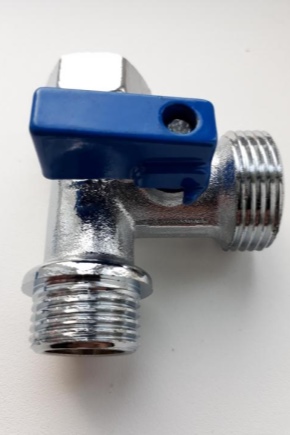
Automatic washing machines have become part of the everyday life of modern people. They greatly simplify the care of clothes, minimizing human participation in the washing process. However, in order for the machine to function reliably for a long time, it must be properly connected to the water supply system. A prerequisite for connecting the device is the installation of a crane, which is the main element of the shut-off valves and prevents emergencies.
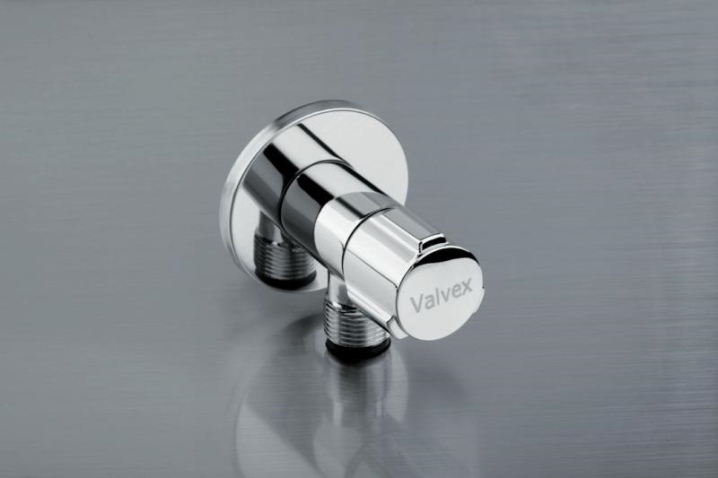
Appointment
The role of the tap in the water supply system of the washing machine is invaluable.... This is because water shocks often occur in water supply systems, which are the result of unexpected emergency surges in pressure within the network. Such impacts can damage the internal water-bearing elements of the washing machine, such as the non-return valve and flexible hose, and cause a flood.
Moreover, even in the absence of emergency situations, the shut-off valve of the machine is not designed for the constant pressure of the water column: its spring begins to stretch over time, and the membrane ceases to fit snugly against the hole. Under the influence of constant squeezing, the rubber gasket often breaks down and breaks.
The risk of a breakthrough increases especially at night, when the drawdown tends to zero, and the pressure in the water supply network reaches its daily maximum. In order to avoid such incidents, a universal type of shut-off valve is installed at the place where the washing machine is connected to the water supply system - a water tap.
After each wash, the water supply to the machine is shut off, which completely eliminates the risk of hose rupture and flooding of apartments on the lower floors.
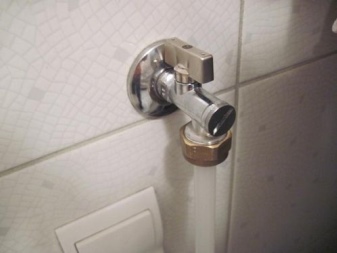
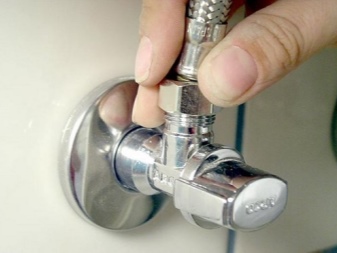
Device and principle of operation
To connect washing machines to the water supply, they most often use simple ball valves, which are distinguished by high reliability, long service life, simple design and low price. The use of gate valves, conical models and valve taps, which involve a slightly longer twisting of the "lamb" to open / close the water, is usually not practiced. Today there are several types of valves for washing machines, and the functioning of most of them is based on the operation of the ball.
The ball valve is arranged quite simply and consists of a body, inlet and outlet nozzles with an external or internal thread, a ball with a rectangular recess for the stem, the stem itself, landing and O-rings, as well as a rotary handle made in the form of an elongated lever or butterfly valve.
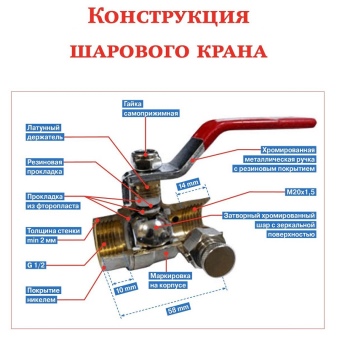

The principle of operation of ball valves is also simple and looks like this... When you turn the handle, the stem, connected to it by a screw, turns the ball. In the open position, the axis of the hole is aligned with the direction of the water flow, so that water flows freely into the machine.
When the handle is turned to the “closed” position, the ball turns and blocks the water flow. In this case, the angle of rotation of the lever or "butterfly" is 90 degrees. This allows you to stop the water supply to the unit with one movement, which is especially important in case of emergency situations.
This is one of the main differences between a ball valve and a gate valve, which to completely stop the water supply, a long rotation of the "lamb" is required... In addition, find 3/4 gate valves'' or 1/2'' almost impossible. The advantages of ball valves include small size, reliability, long service life, low cost, maintainability, simplicity of design, corrosion resistance and high tightness.
The disadvantages include the need for measurements and calculations during installation, since cranes with a lever-type handle may not have enough space for free movement, for example, due to the proximity of a wall.
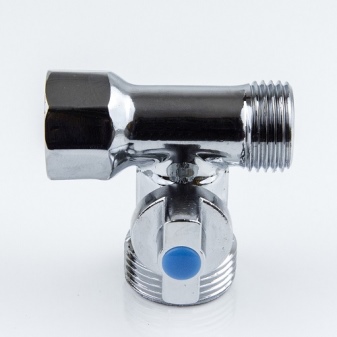
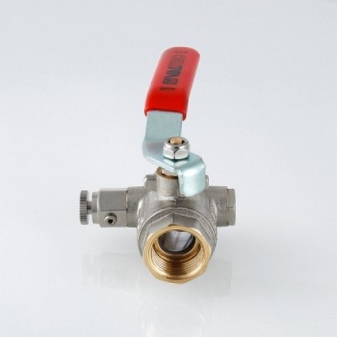
Views
The classification of taps for washing machines is made according to the shape of the body and the material of manufacture. According to the first criterion, the models are subdivided into straight-through, corner and three-pass through passages.
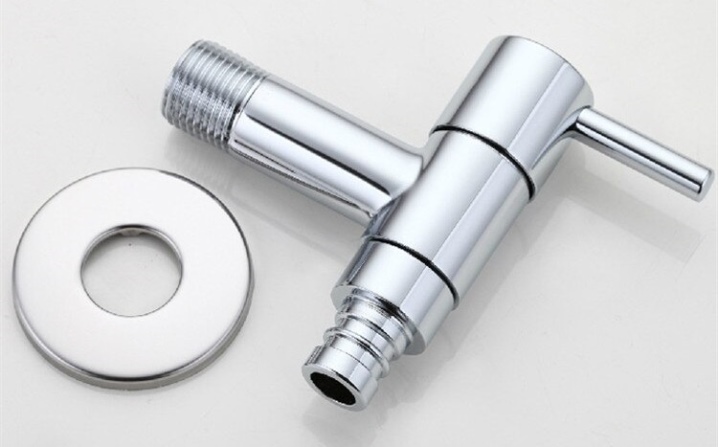
Ball passage straight-through
The straight-through valve consists of inlet and outlet nozzles located on the same axis. In this case, the inlet pipe is connected to the water pipe, and the outlet pipe is connected to the washing machine inlet hose.
Direct-flow models are the most common type of taps and are used when installing toilets, dishwashers and other devices.
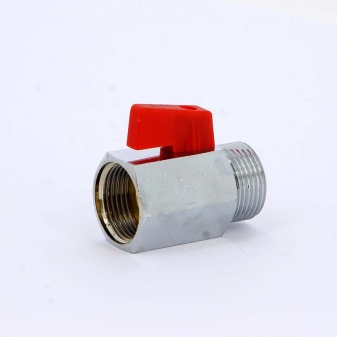
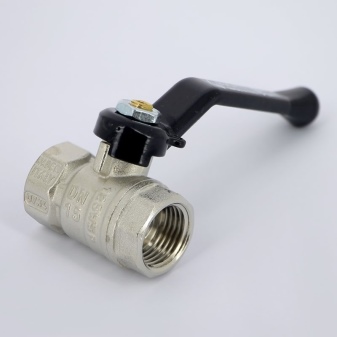
Angular
L-shaped taps are used when connecting the washing unit to a water outlet built into the wall. With this arrangement of water supply lines, it is very convenient when the flexible inlet hose fits to the outlet from below at a right angle. Corner taps divide the water flow into two sections located at an angle of 90 degrees to each other.
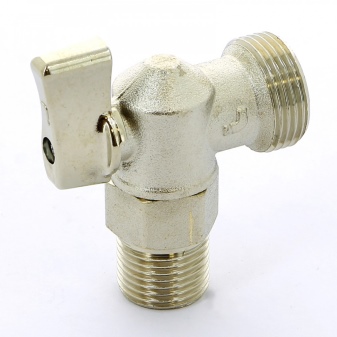

Three-way
A tee tap is used to connect two units to the water supply network at once, for example, a washing machine and a dishwasher. It allows simultaneously regulate the water supply to both devices and not overload the water supply network with separate taps for each device.

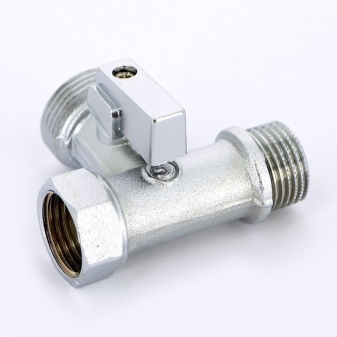
Manufacturing material
For the production of cranes, materials that differ in their operational properties are used. The most common are products made of steel, brass and polypropylene, and brass models are considered to be of the highest quality and durable. Among the cheaper materials, one can note silumin is a low quality aluminum alloy.
Silumin models have low cost and low weight, but they have low plasticity and crack under high loads. Also, all types of valves are classified as inexpensive valves. plastic taps.
They are conveniently mounted in a polypropylene pipeline system and make it possible to save money on the purchase of metal-to-plastic adapters.
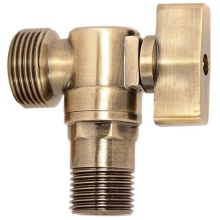
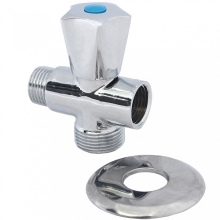
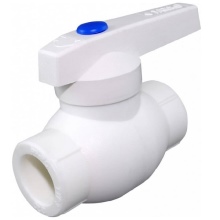
Life time
The durability of washing machine taps is determined by the material of their manufacture and the intensity of operation. For example, with a stable pressure inside the network, not exceeding 30 atmospheres, a water temperature not higher than 150 degrees, the absence of frequent hydraulic shocks and not too intensive use of a machine, the service life of steel and brass taps will be 15-20 years.
If the valve is opened / closed many times a day, and emergency situations often occur on the pipeline, then the life of the valve will be approximately halved. Plastic models with a brass ball and a polypropylene body can last much longer than metal ones - up to 50 years.
A prerequisite for their long-term operation is an operating pressure of up to 25 bar and a medium temperature not higher than 90 degrees.
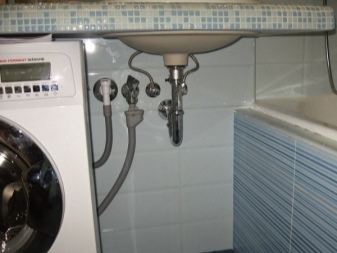
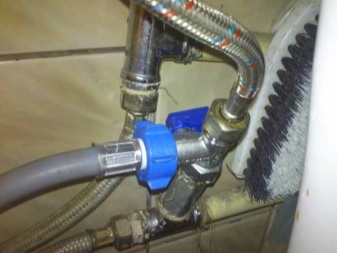
How to choose?
When choosing a tap to connect a washing machine there are a number of important points to take into account.
- First you need to determine the type of crane... If the machine will be installed in the kitchen or in a small bathroom, where it is supposed to be placed as close to the wall as possible, then it is better to purchase an angular model, and hide the water pipe in the wall, leaving only the connection unit outside.If, in addition to the washing machine, it is planned to connect other household appliances, for example, a dishwasher, then a three-way copy should be bought.
- Next, you need to decide on the material of manufacture, taking into account that the most inexpensive silumin samples serve a very short period of time, a brass faucet will be the best option. Plastic models have also proven themselves well as shut-off valves, however, they have a number of restrictions on temperature and working pressure.
- It is also necessary to look at the correspondence of the external and internal threads of the water pipes and the tap.... There are all kinds of threaded connections on sale, so choosing the right model is not difficult.
- It is required to pay attention to the diameter of the water pipes. and correlate it with the size of the valve nozzles.
- An important criterion for choosing a model is the type of valve... So, when installing a crane in a confined space or if the crane is in sight, it is better to use a "butterfly". Such a valve is small and looks quite aesthetically pleasing. In hard-to-reach places, preference should be given to a lever, since in the event of an accident, such a valve is much easier to grasp and close.
- It is advisable to choose models from well-known manufacturers and not to purchase cheap cranes from little-known firms. Products from such companies are in good demand: Valtec, Bosch, Grohe and Bugatti. Buying branded cranes will not be an invoice for the budget, since the cost of most of them does not exceed 1000 rubles. You can, of course, purchase a model for 150 rubles, but you should not expect high quality and long service life from it.
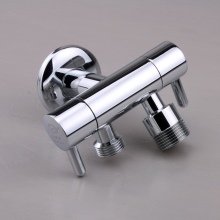

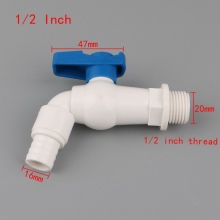
Installation and connection
In order to independently install or change the faucet, you will need a screwdriver, adjustable and wrenches, flax fiber or FUM tape and a filling hose. Moreover, the latter, unless it comes with a typewriter, is purchased with a 10% margin of length. Below is the algorithm for installing straight, angle and three-way valves, depending on the place of their installation.
- Into the wall outlet. In the case of placing water pipes in a strobe or wall, use angular, less often straight taps. In most cases, the socket has an internal thread, so the fitting is screwed into it with an adjustable wrench, not forgetting to wind up tow or FUM tape.
A decorative disc is used to give the connection an aesthetic appearance.
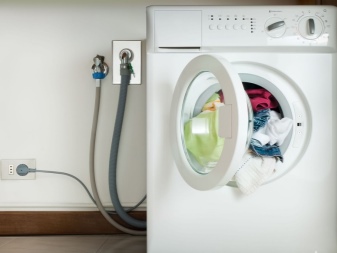
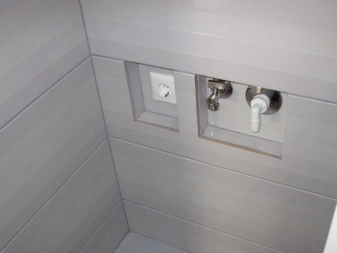
- On the flexible washing line. This installation method is the simplest and most common, it consists in placing a tee tap on the pipe section at the point of connection of the flexible hose going to the sink. To do this, shut off the water, unscrew the flexible hose and screw a three-way tap onto the water pipe. The nut of the flexible hose going to the mixer is screwed onto the opposite outlet of the direct outlet, and the washing machine's inlet hose is screwed to the side "branch". Thanks to the American threaded connection, no sealing materials are required for this installation.
This makes the installation very simple and allows inexperienced persons to perform it.


- Insert into the pipe. The use of this method is justified when the machine is located on the opposite side of the sink, and installation of the tap at the branch of the flexible hose is impossible. To do this, they are soldered into the polymer pipe, and a tee is cut into the steel pipe, using expensive couplings and adapters for this. First, a pipe section is cut out, equal to the sum of the lengths of the valve and filter. A grinder is used to cut metal pipes, and plastic pipes are cut with special scissors. Next, a thread is cut at the ends of the metal pipes, which must correspond to the one on the tap.
When installing a plastic faucet, it is carefully adjusted to the size of the water pipe using a calibrator.Then the metal joints are well pulled with an adjustable wrench, sealing them with tow or FUM tape, and the plastic ones are fixed by means of tightening rings. Next, the overlapped tap outlet is connected to the washing machine inlet hose and all connections are pulled again.
It will be very difficult to do this without plumbing skills, so it is better to entrust this work to professionals.
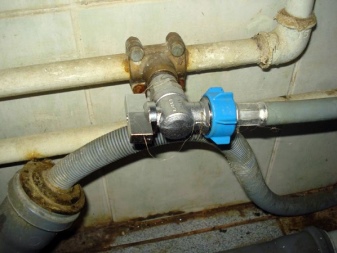
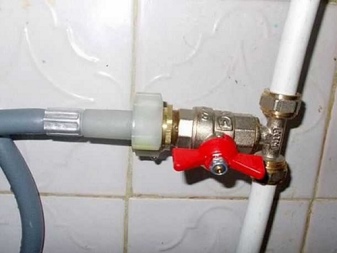
- Into the mixer. For installation in the mixer, a three-way faucet is used, which is installed in the area between the mixer body and the flexible shower hose or between the body and the gander. Before installation, it is necessary to measure the diameter of the threaded connections of the mixer parts and the inlet hose and only after that purchase a tap. The main disadvantage of such an arrangement of shut-off valves is considered to be an unaesthetic appearance, which is due to the violation of the symmetry and harmony of the mixer elements with each other. In order to install the faucet in this way, it is necessary to unscrew the gander or shower hose and screw the tee to the opened threaded connection.

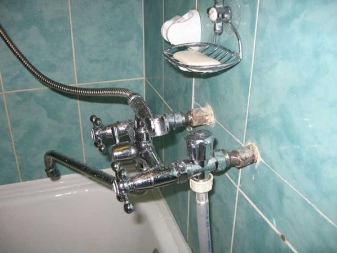
When independently connecting the washing machine and installing the tap, it should be remembered that if the inlet hose is not included in the set of the device, then it is better to purchase a double model with wire reinforcement. Such samples keep high pressure in the network well and ensure uninterrupted flow of water during washing.
Do not forget about filters for running water, which are mounted on the thread of the taps at the point where they are connected to the water pipe.
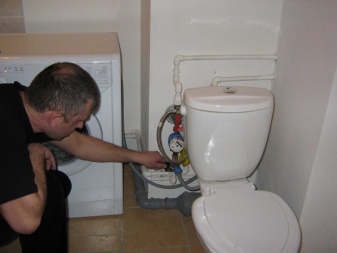
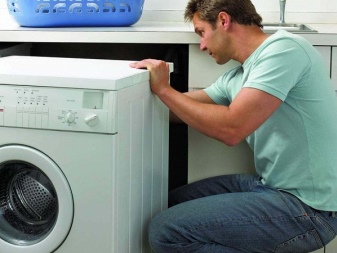
Frequent mistakes and problems during installation
In order to avoid mistakes when installing the crane yourself, it is necessary to follow the advice of specialists and follow the general installation rules.
- Do not overtighten the nuts as this can lead to thread stripping and leakage.
- Do not neglect the use of sealing materials - linen thread and FUM tape.
- When installing the crane on polypropylene pipes the fastening clips should not be located further than 10 cm from the tap. Otherwise, when the butterfly valve or lever is turned, the pipe will move from side to side, which will negatively affect the quality of the connection.
- Mounting the crane on the pipe, it is necessary to ensure that the arrow embossed on the fitting coincides with the direction of movement of the watercourse, in no case setting the valve backwards.
- When cutting a pipe section and installing a valve ends of both parts should be thoroughly cleaned of burrs. Otherwise, they will gradually begin to separate under the influence of water and lead to blockage of pipes.
- You cannot connect the machine to the heating system... This is due to the fact that the water in the radiators is technical and is not suitable for washing things.
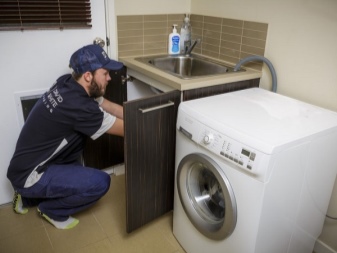
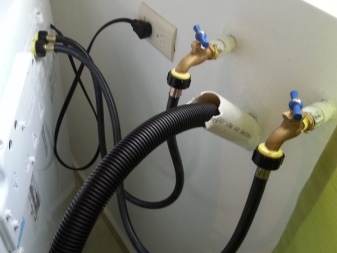
You can find out how to repair a washing machine faucet below.













The comment was sent successfully.